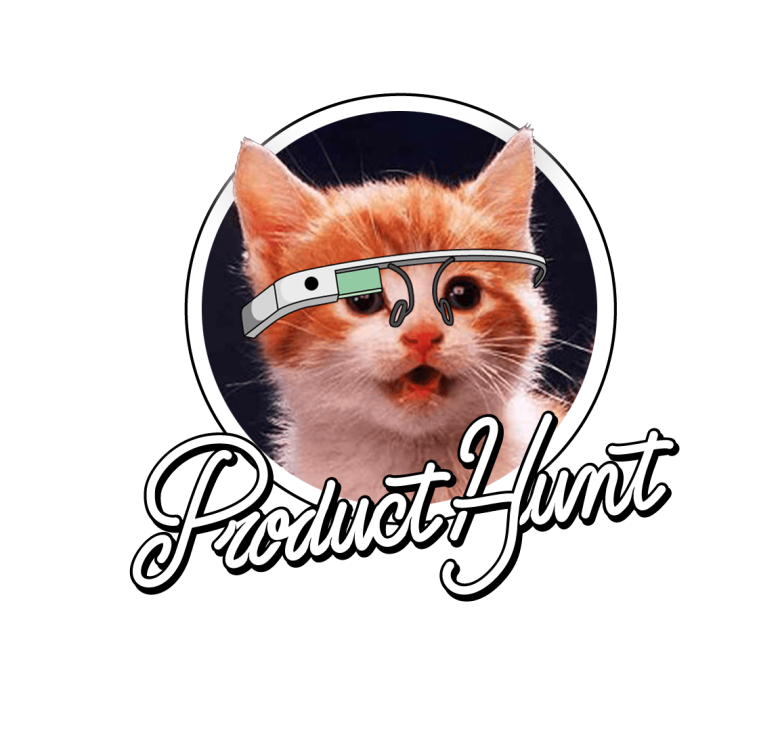The Complete Guide To Launching Your Product on Product Hunt
You’ve painstakingly crafted your product’s MVP, and now, it’s time to make a splash on Product Hunt. But the question remains: How do you navigate this exciting journey?
Fear not! In this guide, we’ll be your guiding light, leading you through the intricacies of orchestrating a sensational Product Hunt launch.
With our expert insights, you’ll be primed to kickstart your startup journey on the most promising note. Let’s embark on this adventure together and set your product up for a resounding success!
Before we get started, if you’re more of a watcher than a reader, check out this great video by Justin Gordon, where he explains his and Gal Ringel’s groundbreaking approach to product hunt launches.
What is Product Hunt?
Before we get started on our killer product hunt launch strategy, let’s cover the basics of Product Hunt.
Product Hunt, made by Ryan Hoover in 2013, helps folks share new products and get noticed. It began as a simple newsletter but has become a community for tech enthusiasts, entrepreneurs, early fans, and investors.
The best part? It’s free to add and use your product here, which is awesome for startups. Around 5.2 to 6.2 million people visit Product Hunt each month, with nearly 20% from the USA.
Why Launch on Product Hunt?
Besides the large number of potential customers who might come across your product on Product Hunt, why else would you want to launch there?
Launching on Product Hunt is like ringing a bell for people who love trying new things. Early fans are important because they help test your product and tell others about it.
Product Hunt doesn’t guarantee huge growth, but it’s great for getting early fans. If you make it to the front page, you can expect thousands of visitors, and top products can get even more.
These visitors are likely to become interested leads. If you’re in the top five, you’ll be in Product Hunt’s email the next day, which is bound to bring in even more traffic and potential customers.
How Do Launches Actually Work?

To have a successful Product Hunt launch, your product must reach the front page, which requires garnering a substantial number of upvotes and engagement. Similar to Google search, most users focus on the top results, so securing a top spot is crucial.
However, it’s essential to avoid tactics that appear manipulative. Product Hunt discourages practices like soliciting upvotes from newly created accounts or spamming on Twitter for votes. They actively demote such posts.
Yet, there’s a balance to strike. While Product Hunt discourages spammy behavior, they also aim to attract new users. If you authentically engage your existing social network and respectfully seek feedback on Product Hunt, you’re unlikely to face penalties.
Here’s a concise approach to gain upvotes without being spammy:
- Prepare an initial audience in advance and encourage their engagement on your Product Hunt launch day.
- Build a positive reputation in startup communities leading up to your launch and ask advocates to support you on the big day.
- If possible, connect with a well-known Product Hunt “hunter” to submit your product. This can expedite your journey to the front page and provide social proof to attract more votes from established Product Hunt members. More details on this strategy to follow.
The Product Hunt Pre-Launch Checklist
So without further ado, let’s look at what you need to do before launching your product on Product Hunt.
1. Build an Audience Early
Begin by creating a pre-launch page on Product Hunt well in advance of your actual launch. This helps you gather emails from interested individuals who can later become beta-testers or early users. Many of them will be eager to support your launch when the time comes.
2. Engage With Other Communities
Actively participate in communities where your product resonates or offers value, such as Product Hunt, IndieHackers, and relevant Slack communities. Share your journey, milestones, and contribute your knowledge to these communities. Your engagement and helpfulness directly impact the response to your posts.
3. Streamline Your Website
Streamline your website’s messaging for your target audience, keeping it concise and engaging. Ensure your website can handle a surge in traffic, as your product may go viral.
4. Build Your Product
While the concept of a Minimum Viable Product (MVP) is well-known, today’s competitive landscape demands something more: a Minimum Loveable Product (MLP). Your product must offer a unique and captivating experience, simplicity, distinguishing features, or something special to stand out.
If you’re interested in learning more, check out our ultimate guides to creating an MVP and an MLP.
5. Prepare your Product Hunt Post
Gather the necessary assets for your Product Hunt post, including:
- Logo (JPG or GIF, 240×240 pixels, max 2MB)
- Product Name (40 characters or less)
- Tagline (fewer than 60 characters, including spaces)
- Description (under 260 characters, including spaces)
- Topics (select three best describing your product)
- Video (must be on YouTube)
- Images (3 or more, recommended size: 1270x760px, <3MB)
- Create Maker profiles if you don’t have them already.
6. Compile a Supporters List
Compile a list of passionate individuals (e.g., current users who love your product) who can provide support on launch day, especially in the first 1-2 hours. Early traction on Product Hunt can boost your visibility. You can do this through email or social media.
7. Choose A Launch Day
Consider launching on competitive days (Tuesday, Wednesday, Thursday) for increased traffic and engagement. Alternatively, opt for weekends when competition is lower, but traffic is also reduced. Your choice depends on your product and strategy.
Keep reading further down this article to learn more about how you should choose your product launch day.
8. Decide On a Self-Launch or Hunter
Decide whether to launch your product independently or with the assistance of a Product Hunt “hunter.” Each approach has its pros and cons. A hunter can schedule your launch and notify their followers, but you have less control. Self-launching allows flexibility but may face stiff competition.
9. Decide on a Special Launch Deal
Product Hunt users appreciate special offers on launch day. Consider providing a launch-day discount or offer, which can generate excitement and interest in your product.
Product Hunt Launch Strategy
Your launch day is finally here, let’s have a look at what you need to do to ensure you have a successful product launch.
1. Notify Your Audience
It’s time to send email newsletters to your supporters, sharing the link to your Product Hunt post and reminding them about the launch. Consider sending these emails in segments on launch day to evenly distribute engagement and upvotes. Include a calendar reminder and a direct link to facilitate voting.
Don’t forget to rally support across communities, chats, forums, groups, and social media channels. Incorporating banners, Product Hunt widgets, badges, or dedicated content on your website, especially if you’re offering an exclusive deal or limited-time Product Hunt-related discount, is essential on launch day.
2. Claim Your Product Hub
After launching your product, request access to your Product Hub page, in addition to the Launch Page you already have. This page contains a product summary, launch history, contacts, links, and other vital information. By claiming it, you can convert upvoters into followers of your ongoing Product Hub page.
3. Engage with Comments
Dedicate time to respond to comments, address questions, and actively participate in discussions, naturally extending the conversation threads. Being an active member of the community on launch day and beyond is crucial if your launch is successful. Acknowledge the audience’s interest in your product.
Additionally, monitor the Launch Day Dashboard to track the number of upvotes, reviews, and comments. Keep an eye on your startup analytics to gauge your progress.
4. Add The Product Hunt Widget To Your Website
The primary purpose of this is to encourage your usual website visitors to check out Product Hunt and show their support for your product. Additionally, the widget serves as a reminder for those who arrive at your website from Product Hunt to return and upvote your product.
Post-Launch Checklist

Now that your product launch is complete, it’s time to reflect and learn ready for your next product launch.
1. Show Appreciation To Your Audience
Show appreciation and share your outcomes regardless of how your launch unfolded, expressing gratitude towards your supporters is a positive gesture.
Follow up by sending a newsletter summarizing the launch results, including figures and numbers worth noting. This practice aligns well with the concept of building in public, allowing you to maintain ongoing communication.
Extend this appreciation to your social media, blog, website, and other communication channels that keep you connected with your audience. Sharing your journey and experiences offers substantial value, enabling you to draw from what you’ve learned, gained, or might do differently.
2. Evaluate Your Insights
Evaluating your insights around your launch outcomes is an important step in your startup’s growth strategy. Dedicate sufficient time to analyze the metrics and performance indicators, carefully examining the launch data you’ve tracked. Did you achieve the goals you set?
Similarly, delve into the feedback and testimonials received. These insights can pinpoint weaknesses, prioritize features, and refine your product development roadmap and strategy.
Furthermore, it’s advisable to maintain post-launch promotion on Product Hunt, as there’s always potential to earn distinctions such as Product of the Week, Month, or Year.
3. Learn From Setbacks
If your launch didn’t unfold as anticipated, don’t be disheartened.
Firstly, you’ll have another chance in the future should you decide to relaunch on Product Hunt. Secondly, remember that this platform is just one component of your overall marketing strategy. You can explore other channels and directories while enhancing your product and expanding your user base.
Every experience, whether successful or not, offers valuable insights. View it as an opportunity for learning and growth.
Product Hunt Launch Hacks
Take Your Time with the Launch
Launching on Product Hunt too hastily can lead to disappointment. Thorough planning and preparation, coupled with careful timing, can make a significant difference. It’s essential to ensure that you’re well-prepared before taking the plunge.
Rushing into a launch with unrefined messaging or a poorly executed submission page is one of the biggest mistakes to avoid. First impressions are critical, so don’t squander the opportunity to present your product to the world without your preparation being top-notch.
Build a Support Network Before Launch
Launching without an existing following can complicate matters. While one of the primary goals of a launch is to gain traction and visibility among new audiences, it can be challenging to reach and attract them without a solid base of initial supporters. Therefore, it’s advisable to cultivate a group of dedicated fans before your launch to elevate your chances of a successful rollout.
Strike a Balance – Don’t Be Overbearing Community support is essential, but excessive persistence or spammy behavior can deter people. While having support from dedicated followers or reputable hunters can facilitate your product launch, it’s essential to maintain a respectful and natural approach when seeking feedback or assistance to avoid alienating potential supporters.
Prioritize Quality over Quantity of Upvotes
The quality of upvotes holds substantial significance. Upvotes from established, long-standing accounts and active Product Hunt users carry more weight in influencing your rank than those from newly created accounts.
Attempting to manipulate the system by encouraging people to create new accounts solely for upvoting your product, or worse, using bots or purchasing upvotes, is not only risky but can also lead to disqualification. Instead, focus on authenticity and quality rather than trying to accumulate a large quantity of upvotes.
Set Clear Goals and Monitor Metrics
Keep in mind that achieving upvotes on Product Hunt or securing a high ranking is not the sole objective. Your primary goals should include acquiring quality users, generating leads, and gathering valuable feedback. Therefore, choose measurable key performance indicators (KPIs) that align with your business objectives.
These KPIs might involve enhancing brand awareness, reaching a specific number of downloads, website visits, or sign-ups, or collecting a predetermined number of emails and contacts. Additionally, consider goals related to finding investors and funding opportunities. Conversion rate is another crucial metric to monitor for assessing product performance.
Click here to learn more about how you can create great KPIs to monitor your business.
Optimize Your Website
Regardless of whether your launch goes viral, your website should be well-prepared to handle increased traffic. Ensure that all website elements, including banners, calls to action (CTAs), sign-up forms, and other essential components, are in place before the launch to capitalize on the opportunities that may arise.
What Day Should I Launch On Product Hunt?

Online discussions often focus on the best product launch timing. While there are general rules for the best dates and times to launch, remember that unpredictable events, like breaking news or concurrent launches, mean no universal formula guarantees leaderboard success.
Weekdays generally suit larger companies and solo makers aligning with business hours, while weekends are great for smaller teams and side projects. Weekend launches normally attract 15% more “Visit” clicks.
What Time Should I Launch My Product?
For makers with flexibility, a good rule is to set your launch for 12:01am PST. Product Hunt works on a 24-hour cycle in Pacific Standard Time, so launching at this time ensures a full 24 hours of exposure on the site.
But situations differ. If you’re not targeting a global audience and want to sync with U.S. news, follow your plans. For instance, if a journalist’s article about your company ends its embargo on Friday at 8am PT, launch then to leverage the buzz.
If you’re a non-U.S. startup, consider launching earlier in the day. If your team isn’t online until 9am PST and you want their involvement, launch when you can all celebrate and address feedback together.
Product Hunt Launch Checklist
To help you keep on track with your pre-, during and post-launch tasks, we’ve created a handy downloadable Product Hunt launch checklist for you to use while getting your product off the ground.
FAQs
How Do I Launch On Product Hunt?
To launch on Product Hunt, you should start by creating an upcoming page for your product well in advance.
Then, prepare engaging visuals and a compelling product description, choose the right launch time, and gather a group of initial supporters to upvote your product on launch day. Lastly, actively engage with the Product Hunt community by responding to comments and feedback to maximize your product’s visibility and success.
When Should I Launch on Product Hunt?
You can launch on Product Hunt at 12:01 am PST for a full 24 hours of visibility. However, consider your audience and specific circumstances. If you have a press release or prefer a different time, adjust your launch accordingly.
How Do I Create a Gif Thumbnail For My Product Hunt Launch?
Using GIF thumbnails on Product Hunt is a great way to capture your users’ attention and make your product stand out. Product Hunt’s guide offers two straightforward methods to help you effectively implement GIF thumbnails and enhance your product’s visibility if you’d like to check out how to do this
Can You Re-Launch On Product Hunt?
On Product Hunt, you have the option to relaunch every 6 months, enabling frequent new launches. Alternatively, you can introduce smaller side products or ebooks between these relaunches.
Is Launching On Product Hunt Worth It?
Product Hunt draws in early adopters actively searching for fresh and innovative products, making it an excellent chance to build your initial user base. Additionally, engaging in conversations on Product Hunt can facilitate networking with potential customers, investors, and collaborators.
Key Takeaways
- Product Hunt is a valuable platform to launch your product and attract your initial user base. Engaging with the Product Hunt community can lead to connections with potential customers, investors, and collaborators.
- Launching on Product Hunt can help you reach early adopters who actively seek out new products, making it a favorable opportunity for startups.
- While there’s no guaranteed huge growth, Product Hunt can provide you with early fans who can test your product and spread the word.
- To have a successful Product Hunt launch, aim to reach the front page by securing a substantial number of upvotes and engagement.
- Engage with your existing social network, build a positive reputation in startup communities, and consider connecting with a well-known Product Hunt “hunter” to expedite your journey to the front page.
- Prepare for your launch by building an audience early, engaging with relevant communities, optimizing your website, and creating a compelling product.
- Consider launching on competitive weekdays or quieter weekends based on your product and strategy.
- Decide whether to self-launch or involve a Product Hunt “hunter,” and consider offering a special launch deal to generate excitement.
- After the launch, show appreciation to your audience, analyze your launch results, and learn from any setbacks.
- Take your time with the launch, build a support network before launching, and prioritize quality over quantity of upvotes.
- Set clear goals and monitor key performance indicators (KPIs) to evaluate your launch’s success.
- Optimize your website to handle increased traffic and ensure all essential elements are in place before the launch.
- Choose the right time to launch based on your audience and specific circumstances.
- Product Hunt allows for relaunches every 6 months, and you can also introduce smaller side products or ebooks between relaunches.
Overview
So there we have it, you’re now ready for your Product Hunt launch! Now you’re ready, check out our complete guide to marketing your startup as well as our general advice on launching your product.







